- 1300 007 308
- info@ridapest.com.au
- Open 24 hours, 7 Days a week
The Truth About Australian Bed Bugs: Prevention, Infestations & Treatment
Back to BlogTable of Contents
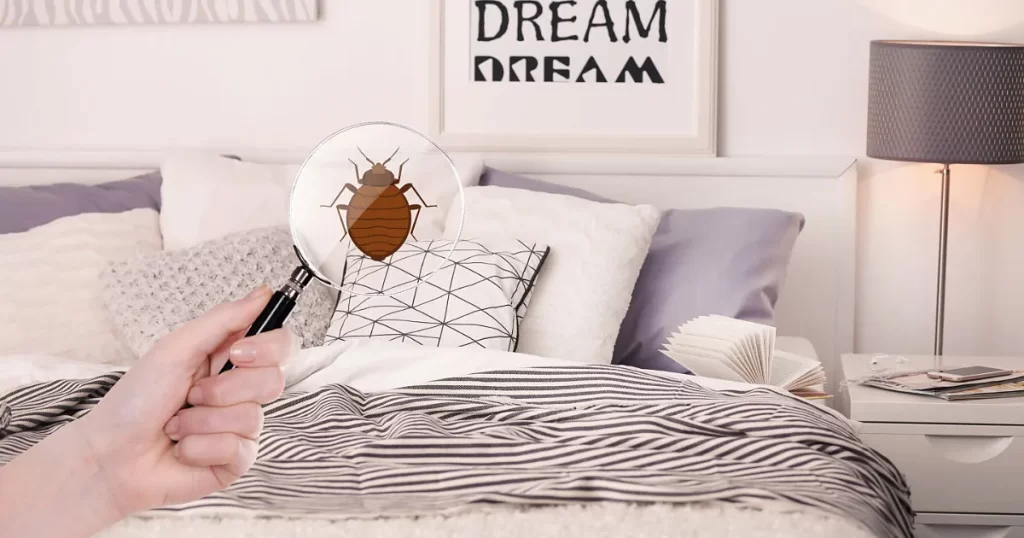
What are Australian bed bugs?
Bed bugs are these creepy little insects that survive by feeding on blood, and they can be found all over the world, even in Australia! They’ve got this fancy scientific name, Cimex lectularius, and they belong to the Cimicidae family.
Bed bugs have this interesting flat, oval-shaped body that’s a reddish-brown colour and measures around 5 to 7 millimetres in length. Despite not having wings, these sneaky little creatures are pretty nimble and can move swiftly across floors, walls, and even ceilings.
Bed bugs are known to be nocturnal creatures, meaning they are active at night when humans sleep. Their preferred food source is human blood and they will bite exposed skin to feed.
When a bed bug bites an individual it will leave behind a red mark which may or may not itch. These marks are usually found in lines or clusters on the skin.
Bedbugs prefer to hide in dark, warm places during the day such as mattresses, box springs, headboards or cracks and crevices near furniture where people sleep or sit for long periods of time. They can also be found hiding in curtains, baseboards, electrical outlets and other household items.
Preventing bed bug infestations involves taking simple steps such as regularly vacuuming carpets and furniture; washing bedding regularly; avoiding picking up used furniture from the side of the road; thoroughly inspecting second-hand items before bringing them into your home; sealing gaps around windows and doors; using protective covers for mattresses and pillows. If you do experience a bed bug infestation then treatment options include professional extermination services which use chemicals specifically designed for bed bugs or heat treatments which involve heating up the space where the bed bugs live with high temperatures that kill these pests.
Bed bugs are parasitic insects that feed on human blood while we sleep at night. They prefer warm dark places like mattresses or couches during the day to stay hidden from view until it’s time for their next meal.
Simple preventative measures like regular maintenance, inspections, and protective covers can help prevent infestations. However, if you find that bed bugs have taken over your home, professional bed bug treatment is necessary to rid your home of these blood-sucking pests.
| Spec | Description |
|---|---|
| Size | Adult bed bugs are about the size of an apple seed. Nymphs are smaller, about the size of a pinhead. |
| Colour | Bed bugs are reddish-brown when they have recently fed. They are brown or black when they are hungry. |
| Shape | Bed bugs are oval-shaped. |
| Habitat | Bed bugs live in dark, secluded places. They are often found in beds, mattresses, furniture, and luggage. |
| Diet | Bed bugs feed on blood. They typically feed at night, but they can feed during the day if they are hungry. |
| Lifespan | Bed bugs can live for up to a year without feeding. |
| Reproduction | Bed bugs reproduce quickly. Female bed bugs can lay up to 50 eggs in their lifetime. |
| Signs of infestation | Signs of a bed bug infestation include bites, blood spots, and eggshells. |
| Treatment | Bed bug infestations can be treated by professional exterminators or by using over-the-counter products. |
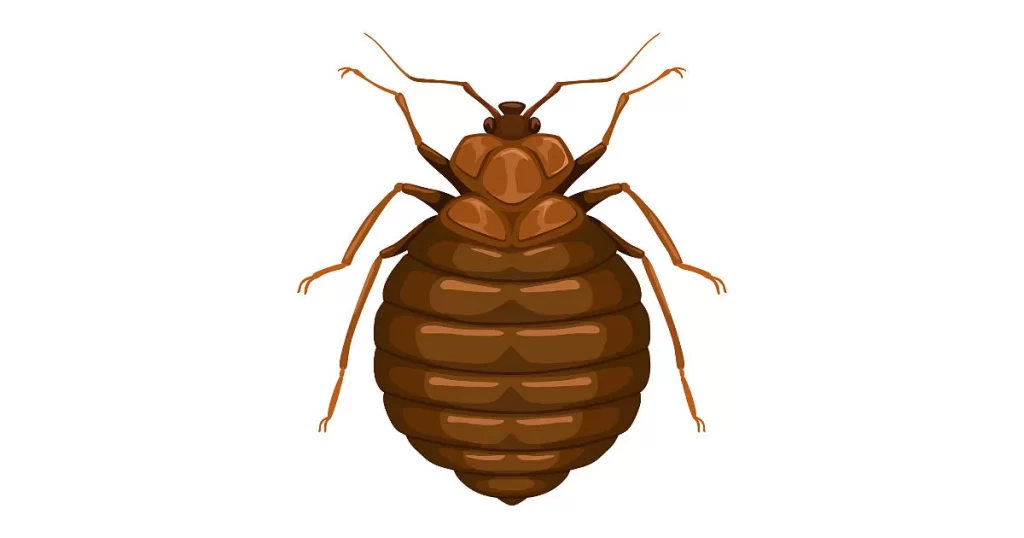
What are the signs and symptoms of bed bugs?
It is important to know the signs and symptoms of bed bug bites so that you can take appropriate action. One of the most common signs of bed bug infestation is bites on your skin.
These bites can appear as small, red welts or bumps on your skin. They often occur in a line or cluster due to multiple bed bugs feeding on one area.
Bed bug bites are painless but can cause a significant amount of itching and discomfort. Another sign of bed bugs is finding their shed skins or eggshells in your home or hotel room.
These shells are often found in areas where bed bugs hide, such as cracks and crevices in walls, furniture, or bedding. You may also notice small rust-coloured marks on your bedding or mattress due to bed bug faeces or crushed bed bugs.
This is a clear indication that you have an active infestation. A musty odour may also be present if you have a significant number of bed bugs since they release pheromones that have a distinct smell.
Not everyone reacts to bed bug bites the same way, so some people may not even notice they’ve been bitten until later on when they see physical signs like welts or develop an allergic reaction. If you start suspecting that your home might be dealing with a bed bug infestation, it’s crucial to act swiftly by reaching out to a pest control expert who specializes in handling these bothersome pests. Taking immediate action is key in ensuring that the situation is effectively addressed and brought under control.
Bedbug treatments typically involve using insecticides and other treatments to eradicate them from your home entirely. Recognising the signs and symptoms of a potential bed bug infestation is crucial in preventing a full-blown bed bug infestation.
Keep an eye out for small, itchy red bumps on your skin, rusty stains on bedding and furniture, and the sweet musty scent of pheromones.
| Sign or Symptom | Description |
|---|---|
| Bites | Bed bug bites are typically small, red, and itchy. They may appear in clusters or lines. |
| Blood spots | Bed bugs may leave small blood spots on sheets, bedding, or furniture. |
| Faecal spots | Bed bugs may leave small, dark brown or black faecal spots on sheets, bedding, or furniture. |
| Eggshells | Bed bug eggshells are small, white, and oval-shaped. They may be found in cracks and crevices near where bed bugs are hiding. |
| Musty odour | Bed bugs may give off a musty odour. This odour is often strongest near where bed bugs are hiding. |
| Restless sleep | Some people who have bed bugs may experience restless sleep. They may also wake up with bites or find blood spots on their sheets. |
| Anxiety or stress | Some people who have bed bugs may experience anxiety or stress. This is due to the fear of being bitten or the worry that the infestation will spread. |
How to prevent bed bugs
Preventing bed bug infestations is much easier than treating them. Once the bed bugs have taken up residence, Eliminating them can be a lengthy and challenging process.
The following are some steps that you can take to prevent the occurrence of these pesky parasites. Firstly, make sure that you inspect all second-hand furniture before bringing it into your home.
Bedbugs are notorious hitchhikers and furniture is one way in which they spread from place to place. If you find any signs of a bed bug infestation, do not bring the furniture into your home.
Secondly, when travelling, always inspect hotel rooms for signs of bed bugs before settling in. Check behind headboards, under mattresses and box springs as well as any crevices or cracks in the room’s structure.
Use luggage racks instead of putting suitcases on the floor or bed while unpacking. Thirdly, reduce clutter around your home as much as possible.
Bed bugs love to hide in clothing piles and cluttered areas making them hard to locate and treat if an infestation occurs. Fourthly, encase your mattresses and box springs with special covers that have been designed specifically for preventing bed bugs from entering or exiting these areas.
Be sure to seal any tears or rips immediately. Vacuum often and thoroughly around your home making sure to concentrate on areas where people sleep or rest for extended periods of time such as beds, couches or even car seats if necessary.
Dispose of vacuum cleaner bags immediately outside to prevent re-infestation. By taking steps towards prevention you can often save yourself from needing extensive treatment options later on down the line making prevention far more cost-effective than attempting treatment after an infestation has occurred.
| Prevention Method | Description |
|---|---|
| Inspect your luggage for bed bugs before bringing it into your home. | Bed bugs can travel from place to place in luggage, so it is important to inspect your luggage for signs of bed bugs before bringing it into your home. Look for bed bugs, eggs, or faecal matter. |
| Wash your clothes and bedding in hot water after traveling. | Bed bugs can be killed by washing them in hot water (at least 130 degrees Fahrenheit). Be sure to wash all of your clothes and bedding, including any items that you did not wear. |
| Keep your home clean and free of clutter. | Bed bugs like to hide in dark, secluded places. By keeping your home clean and free of clutter, you can make it less attractive to bed bugs. |
| Vacuum your home regularly, paying attention to baseboards, furniture, and other areas where bed bugs might hide. | Vacuuming can help to remove bed bugs and their eggs from your home. Be sure to vacuum all of your furniture, including the seams of your mattress and box spring. |
| Use a mattress encasement. | A mattress encasement is a tightly-fitting cover that can help to protect your mattress from bed bugs. Look for a mattress encasement that is made of a tightly-woven fabric and that has a zipper that goes all the way around. |
| Consider using a bed bug interceptor. | A bed bug interceptor is a small, plastic device that you can place under your bed legs. Bed bugs are attracted to heat, and the bed bug interceptor will trap bed bugs that try to climb up your bed legs. |
| Be careful about what you bring into your home. | Be careful about what you bring into your home, especially secondhand furniture or items from hotels. |
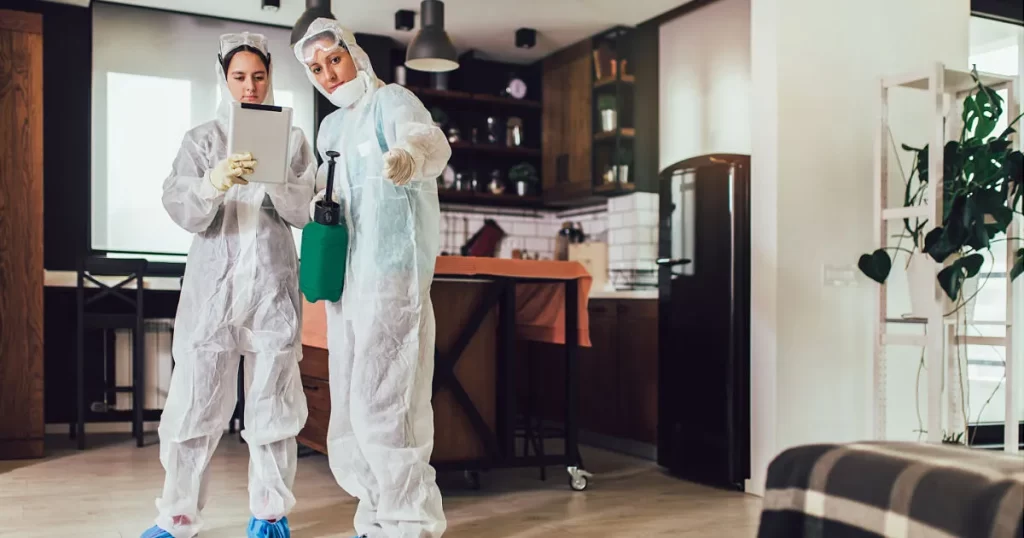
How do you get bed bugs?
Bed bugs are parasitic insects that feed on blood, usually while people are sleeping. These insects are tricky to spot and, unfortunately, relatively easy to bring home with you.
In this section, we will discuss how bed bugs spread and ways to avoid bringing them home. One common way to get bed bugs is during travel.
When you come into contact with these areas, it’s important to keep your clothes off the ground and inspect your bags often for any signs of infestation. Another way people commonly get bed bugs is by purchasing used furniture or items from garage sales or thrift stores.
While it may be tempting to pick up an old chair at a garage sale for a great price, it’s essential always to inspect items before bringing them into your home. Moreover, people who live in multi-unit dwellings such as apartments may also be at risk for getting bed bugs as these pests easily move between units through cracks in walls or floors.
When traveling or staying outside of your house overnight, the best way to prevent picking up unwanted friends is by keeping clean clothes in plastic bags; therefore they are not exposed until you shower at home using hot water killing any unwanted hitchhikers. Overall prevention is key when avoiding getting bedbugs; taking proactive measures such as using protective covers on your mattress and box spring may help reduce the likelihood of infestation so that you don’t have to go through treatments which include managing anemia caused by copious blood loss from bites if left untreated over time.
Where do bed bugs come from?
The most common type of bed bug is Cimex lectularius, and they have been around for thousands of years. In the past, these insects were quite prevalent in the United States. However, thanks to the extensive use of DDT and other insecticides during the 1940s and 1950s, they were nearly eradicated.
Unfortunately, bed bugs have experienced a resurgence in recent times and can now be found across the globe. So where do bed bugs come from?
Bed bugs can originate from various sources, such as hotels, motels, apartments, houses, and hostels. They can be transported on clothing or luggage or furniture and can easily spread throughout a building or community once they take hold.
Bed bugs are extremely resilient creatures that can survive for up to a year without feeding. The most common way to get bed bugs is by bringing them home with you after travelling or staying in an infested location such as a hotel room or rental property.
It’s important to note that anyone can get bed bugs regardless of how clean their living space may be. However, there are steps you can take to prevent bringing bed bugs into your home:
- Always inspect hotel rooms before settling in.
- Avoid purchasing used furniture unless it has been thoroughly inspected for signs of infestation.
- Regularly vacuum carpets and upholstery to remove any potential hiding spots for bed bugs.
- Encase mattresses and box springs with protective covers specifically designed for this purpose.
- Keep clutter to a minimum as it offers additional hiding places for these pests. If you suspect that you have brought home bedbugs, it’s important to take action immediately.
Ignoring the problem will only make it worse, and it can be difficult to eradicate a bed bug infestation once it has taken hold. Treatment options include hiring a professional pest control company or using over-the-counter insecticides specifically labeled for bed bug treatment.
Bed bugs may be small but they are resilient and adaptable creatures that can cause significant distress if left untreated. Understanding where they come from and how to prevent their presence is essential in avoiding an infestation.
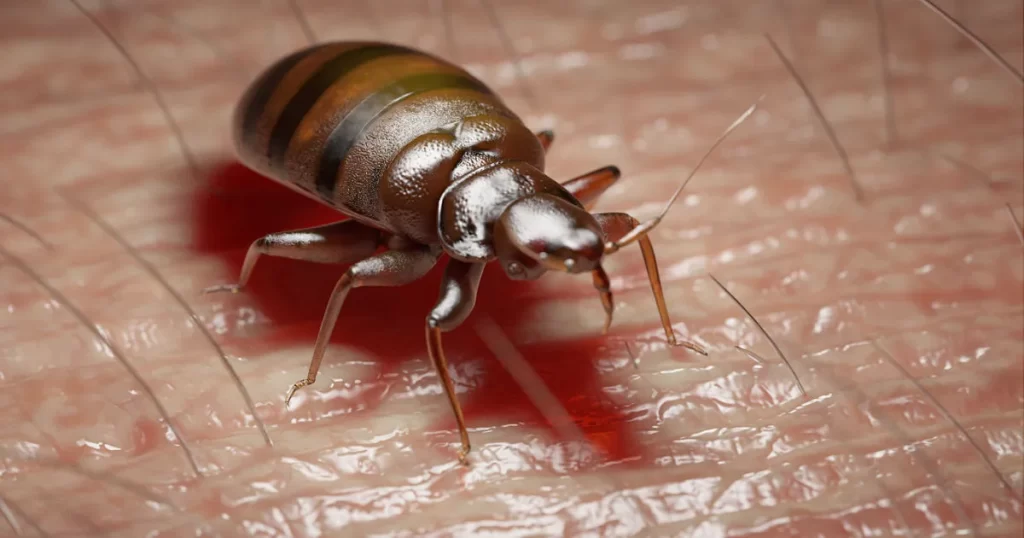
Treatment for bed bug bites
Bed bug bites may cause varying levels of discomfort and itchiness. People react differently to bed bug bites, with some experiencing severe reactions while others are anaemic.
Prevention is always the best cure for bed bugs. Nonetheless, in the event that you have already experienced bed bug bites, there are multiple treatments available to help alleviate the associated symptoms.
One way to relieve the itching caused by a bed bug bite is by using topical creams or ointments containing hydrocortisone, calamine lotion or antihistamines.
If the itchiness continues or becomes unbearable, you have the option to take oral antihistamines like diphenhydramine or loratadine.
These medications block histamine receptors in your body that cause allergic reactions. Another effective treatment for bed bug bites is applying a cold compress on the affected area to reduce swelling and itching.
You can also use a warm compress to reduce pain associated with bed bug bites. However, if you suspect that you have an allergic reaction to bed bugs, seek medical attention immediately.
Anaphylaxis is a severe reaction that requires immediate medical attention because it can be life-threatening. To prevent further infestation and potential exposure to more bed bugs in your home after being bitten, it’s essential to eliminate them entirely from your home through professional extermination methods.
| Treatment | Description |
|---|---|
| Wash the bites with soap and water. | This will help to remove any bed bug saliva or debris from the bites. |
| Apply an over-the-counter topical cream or ointment. | This can help to reduce itching and inflammation. Look for a cream or ointment that contains hydrocortisone or calamine. |
| Take an oral antihistamine. | This can help to reduce itching and inflammation. Talk to your doctor about which antihistamine is right for you. |
| Apply a cold compress. | This can help to reduce swelling and itching. |
| Avoid scratching. | Scratching can make the bites worse and can lead to infection. |
| If the bites are severe, see a doctor. | If the bites are severe or if you have an allergic reaction, see a doctor. They may prescribe a stronger medication or give you advice on how to manage the bites. |
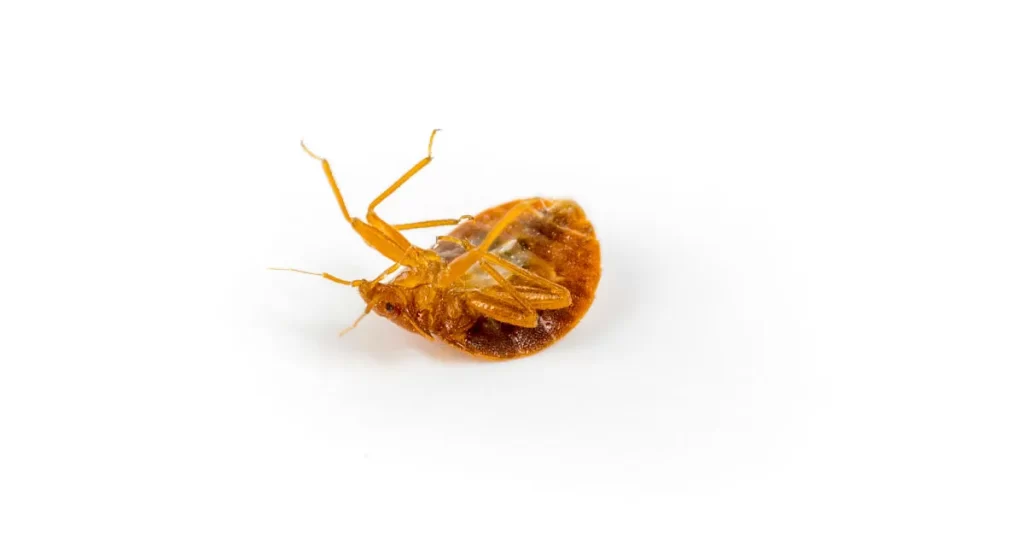
Controlling a bed bug infestation
Bed bugs are not known to transmit diseases, but they can still pose a significant problem if they are not controlled early on. Here are some ways to control a bed bug infestation.
Once you have identified the source of the infestation, quarantine any items that may be harbouring bed bugs and get them professionally treated or disposed of. The next step is to thoroughly clean your home, paying special attention to areas where bed bugs may hide such as cracks and crevices around furniture, walls and baseboards.
Vacuuming is also an effective way to remove any adult bedbugs or eggs from your mattress or other furnishings. Another way to control a bed bug infestation is through heat treatment.
Bedbugs cannot survive temperatures above 50°C so exposing affected furniture or clothing to high heat can kill them off effectively. Professional pest control services often use heat treatments as part of their arsenal against bedbugs.
It’s important not to rely solely on DIY treatments for getting rid of a bedbug infestation as some methods may cause the insects to spread further around your home. Also, over-the-counter insecticides should be used with caution as they contain harmful chemicals that could pose risks for humans and pets alike.
Controlling a bed bug infestation requires careful planning and often professional help from trained pest control experts who know how best to handle these elusive insects known as cimex lectularius (bedbugs). With proper prevention techniques in place such as regular cleaning, quarantine of potentially infected items and prompt treatment upon detection of an infestation, you can effectively manage and control bed bugs in your home.
How Many Eggs Do Bed Bugs Lay?
Bed bugs are notoriously difficult to control due to their fast reproduction rate.
Female bed bugs can lay up to 7 eggs per day, which means that one female could produce up to 500 eggs in her lifetime of approximately 10 months. However, this depends on various factors such as temperature, humidity levels, and food supply.
When it comes to reproduction, bed bugs have a unique mating system known as traumatic insemination. This means that males penetrate females through any part of their body cavity which results in sperm being injected into the female’s body rather than via reproductive organs.
This unusual method of fertilisation is believed to have evolved due to competition between males for access to females. The eggs of bed bugs are oval-shaped and measure around 1 mm in length.
They are white-coloured and almost impossible to see with the naked eye due to their small size. The eggs are typically laid in clusters or batches of around 10-50 at a time.
Once laid, it takes approximately one week for bed bug eggs to hatch into nymphs (immature bed bugs). Nymphs go through five molts before reaching adulthood which can take anywhere from several weeks up to several months depending on environmental conditions.
To prevent a full-blown infestation from developing, you must identify and eliminate any signs of a bed bug problem early on. This includes regularly checking your bedding and furniture for any signs of blood stains or faecal matter (small black/brown dots) left by adult insects or nymphs.
Effective treatment options for getting rid of bed bugs include heat treatments (which kill all life stages including eggs), insecticide sprays (which can be used to target eggs), and vacuuming (which can remove eggs and nymphs from surfaces). However, it is crucial to consult with a professional bed bug treatment provider before attempting to treat an infestation on your own.
| Stage | Number of Eggs |
|---|---|
| Female bed bug | 1-7 eggs per day |
| Female bed bug lifetime | 200-500 eggs |
| Egg | 1 mm long and white in color |
| Egg incubation period | 6-10 days |
| Nymph | 5-6 nymphal stages |
| Nymph size | 1 mm long at first stage, up to 5 mm long at last stage |
| Nymph development time | 1-2 weeks per stage |
Conclusion
Bed bugs are a growing concern worldwide, including in Australia. They can cause health issues if left untreated. Ridapest Termite & Pest Control in Cairns can help with bed bug infestations. Prompt action is crucial upon detecting signs like bites, fecal matter, and shed exoskeletons.
Treating bed bug bites involves using antihistamines. Severe reactions may require medical attention. Anemia can result from repeated bites. Control methods include chemical treatments, vacuuming, and steam cleaning.
Working with a professional exterminator, experienced in dealing with cimex lectularius, is important. Research is underway to find new ways to control bed bugs, such as using natural predators like certain wasp species. Preventing infestations should be a top priority for health and wellbeing.
By being proactive and avoiding bringing bed bugs into our homes and workplaces, we can reduce the risk of bites and negative impacts. Ongoing research offers hope for better control options in the future. Visit Ridapest’s website at Ridapest Termite & Pest Control to learn more about our services, including our bed bug control in Cairns.
Stay Informed on Cairns Pest Solutions:
- 🐭 Looking to outsmart pesky rodents? Explore our guide to Australian Rodents and discover effective strategies to keep these unwanted guests out of your Cairns haven. Say goodbye to rodent troubles!
- 🦟 Ready to reclaim your outdoor space? Dive into the realm of Australian Mosquito Prevention and Control and uncover techniques to enjoy Cairns’ tropical paradise without the buzz of these pesky biters.
Frequently Asked Questions
What are Australian bed bugs?
Australian bed bugs are parasitic insects that feed on human blood while they sleep at night. They belong to the Cimicidae family and have an oval-shaped, reddish-brown body that measures around 5 to 7 millimetres in length.
What are the signs and symptoms of bed bugs?
The most common signs of bed bugs are bites on the skin that can appear as small, red welts or bumps that often occur in a line or cluster. You may also find shed skins or eggshells of bed bugs in your home or hotel room, small rust-coloured marks on your bedding or mattress due to bed bug faeces or crushed bed bugs, and a musty odour.
How can I prevent bed bugs?
You can prevent bed bug infestations by inspecting all second-hand furniture before bringing it into your home, checking hotel rooms for signs of bed bugs before settling in, reducing clutter around your home, encasing your mattresses and box springs with special covers, vacuuming often and thoroughly around your home, and being careful about what you bring into your home.
How do I get bed bugs?
Bed bugs are parasitic insects that feed on blood and can be easily brought into your home through travel, purchasing used furniture or items from garage sales or thrift stores, and living in multi-unit dwellings such as apartments.
How can I treat a bed bug infestation?
If you have a bed bug infestation, professional bed bug treatment is necessary to rid your home of these pests. Treatment options include professional extermination services which use chemicals specifically designed for bed bugs or heat treatments which involve heating up the space where the bed bugs live with high temperatures that kill these pests. Preventative measures, such as regularly vacuuming carpets and furniture, washing bedding regularly, and sealing gaps around windows and doors, can help prevent infestations.

Or Mathias
Passionate owner of Ridapest Termite & Pest Control in Cairns, Australia, leveraging over five years of industry experience to provide pet and family-friendly pest control solutions. Known for his dedication to customer satisfaction and environmental safety, Or has grown Ridapest into a leading service, setting new standards in pest control while keeping homes and businesses safe.
